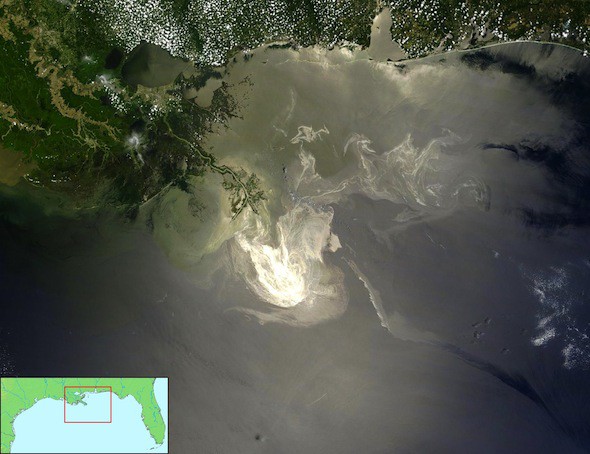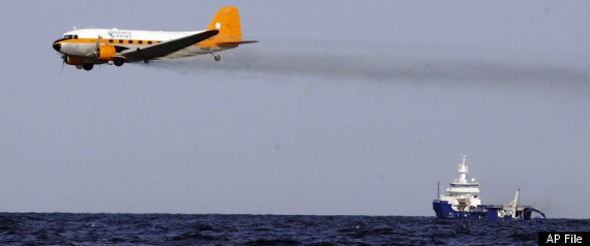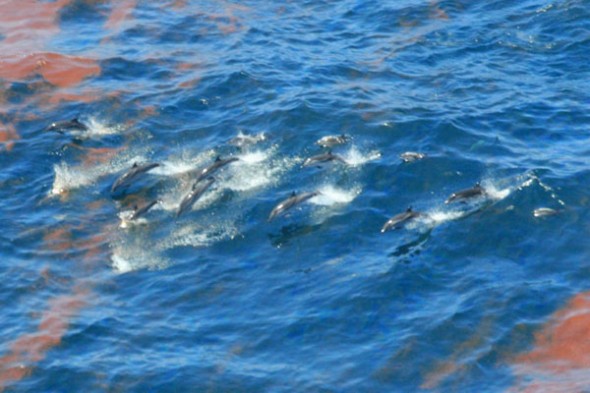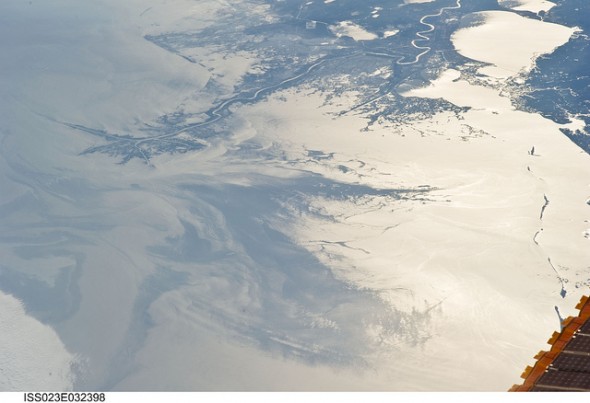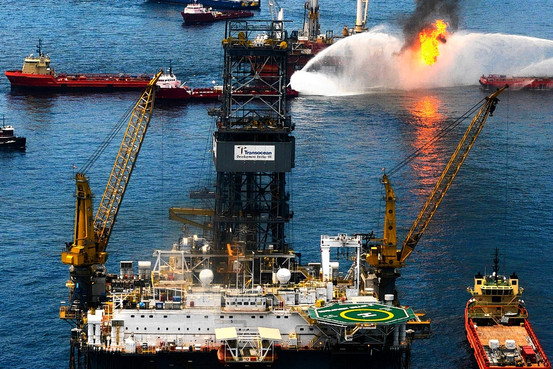Deepwater Horizon spill: Five years later, endless problems
Five years have passed since BP’s Macondo well exploded leading to the largest offshore spill in U.S. history. The story of the Deepwater Horizon spill no longer draws much media attention, but the problems have not gone away.
Deepwater Horizon spill: Three years on, terrible new revelations
What BP Doesn’t Want You to Know about the Gulf Spill is a new article by Mark Hertsgaard, and if you have ever wondered how the largest single, accidental oil spill in the world just vanished, don’t miss this story. It is an absolutely shocking recounting of BP’s massive, reckless use of the highly toxic dispersant, Corexit, which effectively “disappeared” much of the spilled oil and in the process caused untold damage to clean-up workers’ health and the ecosystem.
Three years after the spill, Herstgaard writes, the disaster has been largely forgotten. “Such collective amnesia may seem surprising,” he continues, “but there may be a good explanation for it: BP mounted a cover-up that concealed the full extent of its crimes from public view. This cover-up prevented the media and therefore the public from knowing — and above all, seeing — just how much oil was gushing into the gulf. The disaster appeared much less extensive and destructive than it actually was. BP declined to comment for this article.”
An Al Jazeera must watch
If you are concerned in the least about the environmental risks of drilling, don’t miss Al Jazeera’s latest feature report from the Gulf of Mexico, “Gulf seafood deformities alarm scientists.”
This reporting is so scary — it paints a picture of devastation that flies in the face of the feel good, everything is fine, BP-sponsored “My Gulf” ad campaign. Mutant shrimp and crabs. Dead dolphins. Strange lesions and tumors on fish. Missing eyes and oil-soaked gills. Dramatic declines in catch levels since the Deepwater Horizon disaster. It’s a nightmare and it appears that this is only just beginning.
The silent victims of oil pollution
News from the U.S. National Oceanic and Atmospheric Administration (NOAA) is supporting what many have been saying for months: Pollution from the Deepwater Horizon spill is ongoing and harming life in the Gulf of Mexico.
Yesterday the NOAA released information on the disturbing results of its dolphin study, which found that bottlenose dolphins in the Gulf of Mexico are “severely ill.”
The news was reported by the New York Times and elsewhere, but it was buried down in the environment section. The environment, dolphins, pollution — none of this seems as important as rising gas prices and the administration’s efforts to boost drilling both onshore and offshore.
BP: A settlement and many unanswered questions
For those who believed that a trial would be the best way to hold BP accountable for the shortcuts and errors that resulted in the deadly Deepwater Horizon disaster, the news out of New Orleans last night was not good.
BP has reached an agreement and will settle the case brought against it by companies and individuals whose livelihoods were impacted by the Gulf oil spill.
Judge Carl J. Barbier of Federal District Court in New Orleans issued an order late Friday night stating that the two sides “have reached an agreement on the terms of a proposed class settlement which will be submitted to the court,” and announcing that the first phase of the trial, scheduled to begin on Monday, is adjourned indefinitely while the next steps are worked out.
What’s killing the dolphins?
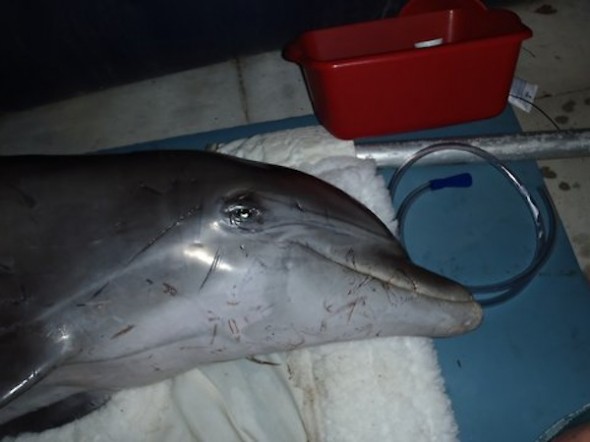
An injured dolphin as it appeared when rescued in Alabama last week. Photo: Institute for Marine Mammal Studies
I read an interesting post in the New York Times Green blog about the dolphin die-off in the Gulf of Mexico. Since early 2010 dead dolphins have been washing ashore at an alarming rate and among the many possible explanations for the 600 dead dolphins is — of course — the BP oil spill. According to the article, which I’m pasting below, scientists are not yet able to determine the cause of the die-off.
This made me think of the recent rash of beached dead whales in Ghana, which, according to the Ghana EPA, is unrelated to the country’s oil activities. I wonder how the Ghana EPA was able to make such a determination so quickly. The New York Times piece gives the impression that determining the exact cause of death of these beached mammals is quite complicated.
Sea Change
I recently came across this fascinating article about the efforts of Gulf Coast Vietnamese Americans to rebuild their lives and livelihoods after the BP oil spill. Like all those who worked in the Gulf seafood industry, the Vietnamese fishing community has been hard hit. Facing compensation battles, diminished fish stocks and an uncertain future, many are turning from the sea to the land in search of new opportunities.
The article, Sea Change, by Nina Kahori Fallenbaum, with photos by Lisa Cates, is in the current issue of Hyphen magazine.
You can read the entire article online. Check it out. The BP spill is already ancient history as far as the oil industry is concerned. But for those whose livelihoods depended on fish and seafood, there’s no more normal.
Voices from the Gulf: Best Place
Have you seen this? BP is out to win the hearts and minds of Gulf Coast residents with upbeat videos on YouTube. Everything is great! Based on the comments I’ve read so far, it doesn’t look like their campaign is having much success.
Recent news accounts also paint a more nuanced picture of Gulf Coast “recovery”: BIRMINGHAM, Ala. — Tar balls washed onto Gulf of Mexico beaches by Tropical Storm Lee earlier this month show that oil left over from last year’s BP spill isn’t breaking down as quickly as some scientists thought it would, university researchers said Tuesday.
What Happened at the Macondo Well?
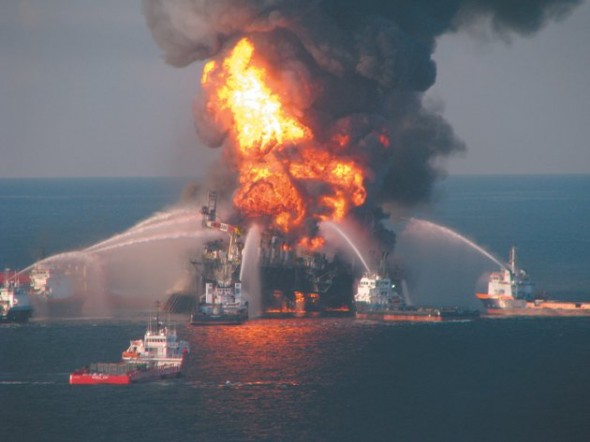
Fireboat response crews battling the blazing remnants of the Deepwater Horizon, the offshore drilling rig owned by Transocean that exploded when BP’s Macondo oil well ruptured in the Gulf of Mexico, April 21, 2010. Photo: U.S. Coast Guard
Journalist and author Peter Maass has reviewed four recently published books on the Deepwater Horizon disaster. Maass, whose book Crude World: The Violent Twilight of Oil is a searing indictment of the global oil industry, knows only too well that BP is hardly the bad apple. As he says in the review, “BP recklessly cut corners whenever it could, but so did Transocean, and so did—does—the rest of the fossil fuel industry.”
Understanding the Deepwater Horizon disaster is important then, because of what happened of course, but also because this can happen again, anywhere.
Deepwater Horizon, nearly one year on…
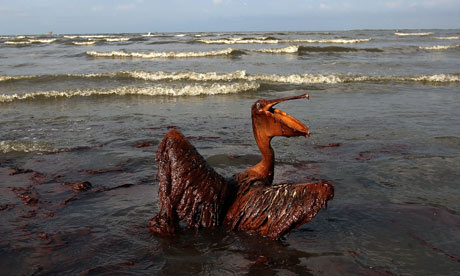
A brown pelican coated in heavy oil wallows in the Louisiana surf, June 2010. Photograph: Win Mcnamee
BP held its first annual shareholders’ meeting since the Deepwater Horizon disaster yesterday in London. The meeting was marked by protests outside and protest votes inside. Several people who had traveled to London from the Gulf of Mexico to share their stories with BP shareholders were prevented from entering and later arrested.
The protests got the meeting into the news and reminded people for a moment that the impact of the Deepwater Horizon spill is ongoing. BP claims it has learned its lessons and the Obama administration is issuing new drilling permits for the Gulf of Mexico. The oil industry has moved on, but what about the Gulf?
A great day for oil!
Transocean, remember them?
Transocean Ltd. had its “best year in safety performance” despite the explosion of its Deepwater Horizon rig that left 11 dead and oil gushing into the Gulf of Mexico, the world’s largest offshore-rig company said in a securities filing Friday.
Accordingly, Transocean’s executives received two-thirds of their target safety bonus. Safety accounts for 25% of the equation that determines the yearly cash bonuses, along with financial factors including new rig contracts
The payout contrasts with that for 2009, when the company withheld all executive bonuses after incurring four fatalities that year “to underscore the company’s commitment to safety.”

